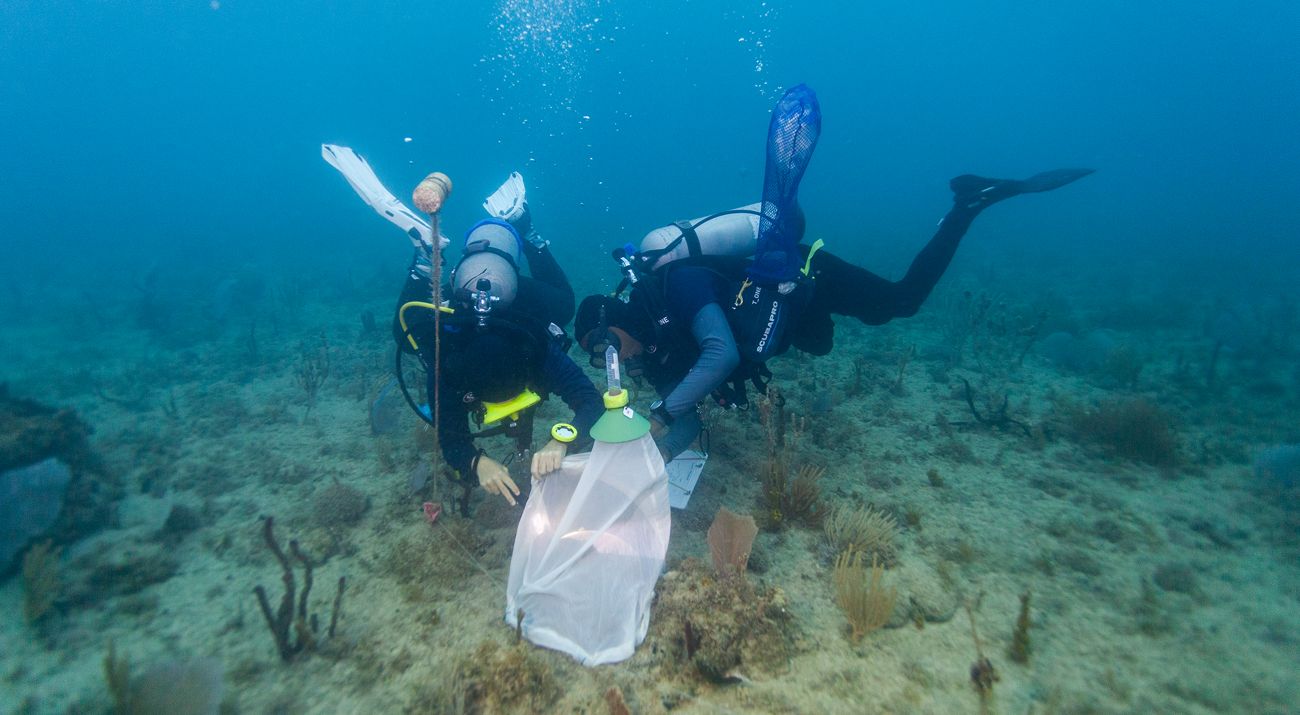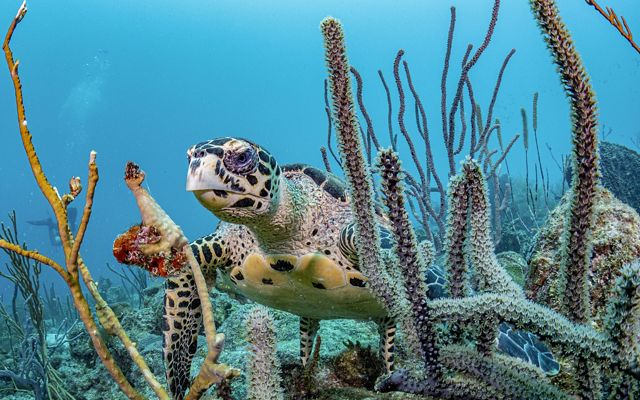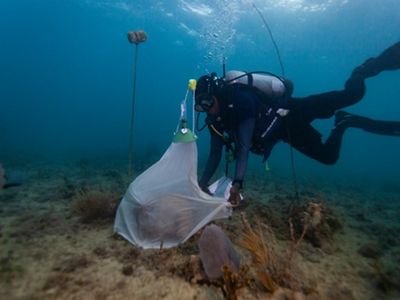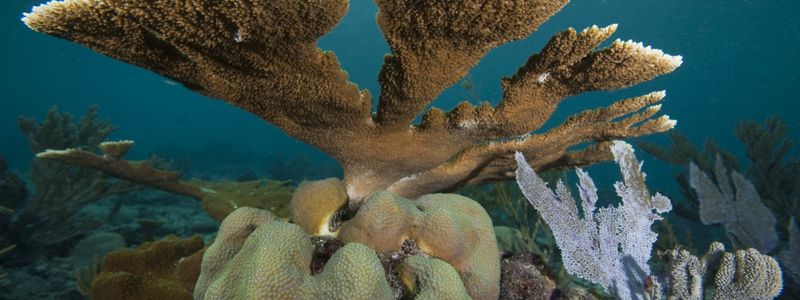
Over the last six months, the CoralCarib project advanced its restoration, monitoring, training and community engagement efforts across the region. In July, The Nature Conservancy’s Caribbean Division and the Reef Resilience Network hosted a four-day marine protected area (MPA) Management Effectiveness Workshop in Kingston, Jamaica. Twenty-nine marine managers from Cuba, the Dominican Republic, Haiti, Jamaica and the U.S. Virgin Islands developed site-specific action plans to strengthen MPA monitoring, adaptive management and communication with local stakeholders.
In Haiti, our local partners, Haiti Ocean Project and Initiative for Environment and Integrated Development in Haiti, engaged community members through a training program. The training equipped participants to identify, photograph and GPS-tag healthy mountainous star coral (Orbicella faveolata) colonies, which were then directly transplanted to restoration areas. Recent sightings of sharks and dolphins near the coral nurseries show signs of a healthier and recovering ecosystem. Parallel initiatives included fish aggregating device installations that attract pelagic fish, fishing equipment distribution and post-harvest training.


Practitioners from Jamaica participated in coral spawning training with local partners in the Dominican Republic, making observation dives at various sites. September is Coral Awareness Month, and we are working collaboratively with the National Environmental Planning Agency of Jamaica on outreach highlighting CoralCarib’s restoration and training efforts for coral practitioners across Jamaica.
The Dominican Republic is preparing for its inauguration of its new coral restoration hub. This milestone will bring together government officials, the private sector, NGOs and donors to strengthen restoration capacity on a national scale. Local teams produced 370 elkhorn coral (Acropora palmata) fragments with a 100% survival rate, and 1,471 fragments in 2025 with 84% survival. The team deployed artificial grass and bio-balls—spheres that provide surface area for microbes—for black sea urchin (Diadema antillarum) recruitment. Outplanting and disease monitoring continue at multiple sites.

In Cuba, restoration teams conducted training in sustainable fishing, tourism, agroecology, environmental legislation and coral taxonomy. They have also monitored spawning events, collected gametes, and assembled coral farms for seeding recruits.
Across all four partner countries, CoralCarib continues to build knowledge, optimize technological advancements and strengthen community capacity to restore reefs and build resilience for reef-dependent communities.
We Can’t Save Nature Without You
Sign up to receive monthly conservation news and updates from the Caribbean.
